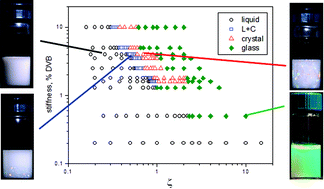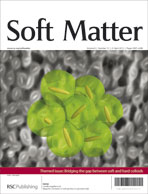We investigate the phase and non-equilibrium behavior of suspensions comprised of swollen, ionic microgels as a function of particle stiffness. We use visual inspection of the samples, rheology and UV-visible spectroscopy to determine how the system phase changes with particle concentration for particles with different crosslinker content. Our results indicate that stiff particles exhibit all three phases observed in hard sphere suspensions: liquid, crystal and glass; however, the boundaries separating one phase from the other are different from the corresponding boundaries in hard sphere suspensions. In particular, the width of the liquid–crystal phase-coexistence region increases with decreasing particle stiffness. For particles with intermediate stiffness, the crystal phase disappears and the microgel suspension transitions from a liquid to a glassy state at certain particle concentration. For even softer particles, no glassy state is observed. Instead the system remains liquid within the experimentally accessed concentration range. These results emphasize the richness in behaviour that is brought about when deformable and compressible objects are considered instead of the more usual hard colloidal particles.

You have access to this article
 Please wait while we load your content...
Something went wrong. Try again?
Please wait while we load your content...
Something went wrong. Try again?


 Please wait while we load your content...
Please wait while we load your content...